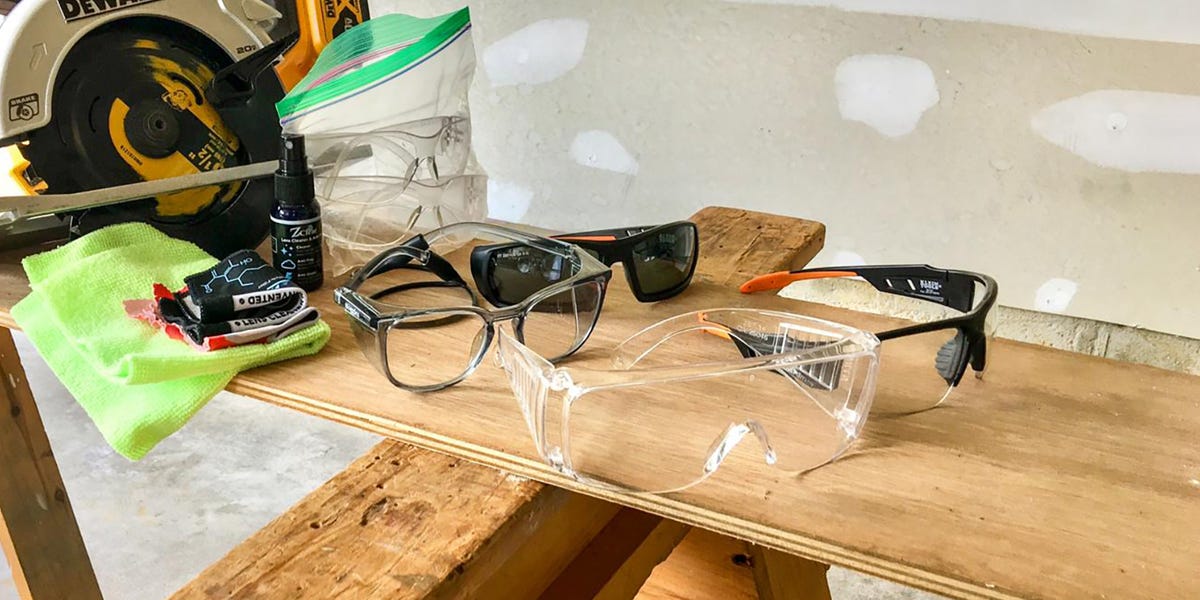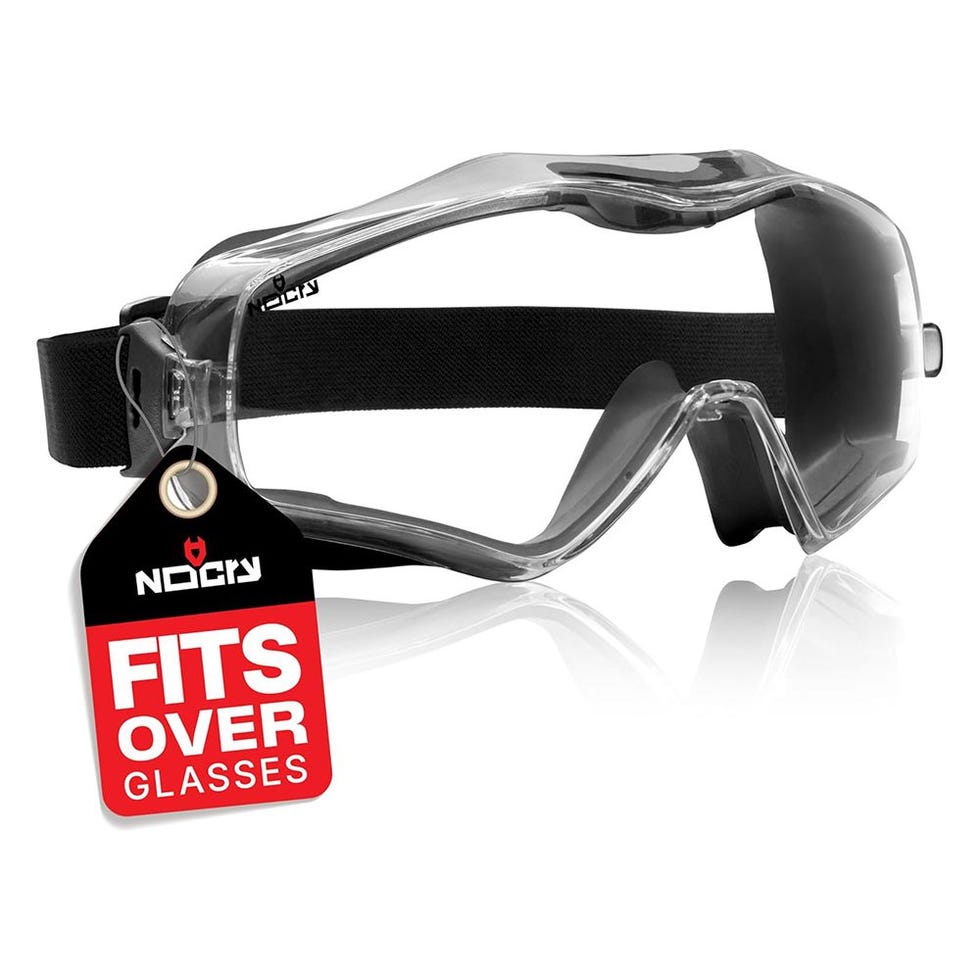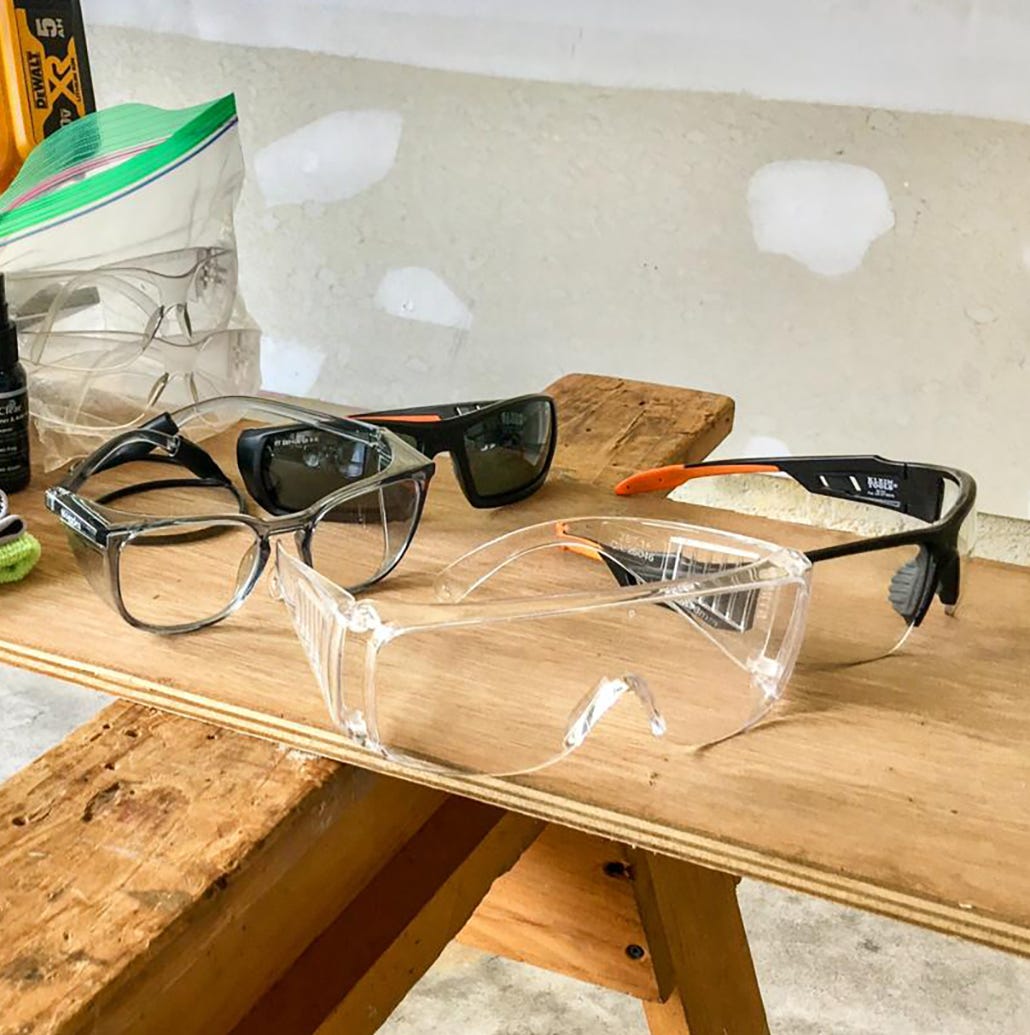When you’re working on your DIY projects, protecting your eyes should be at the top of your list. Choosing the right safety glasses isn’t just about comfort—it’s about keeping your vision safe from unexpected sparks, dust, and debris.
But with so many options out there, how do you know which pair is best for you? You’ll discover simple tips that make picking the perfect safety glasses easy and effective. By the end, you’ll feel confident that your eyes are fully protected every time you tackle a new project.
Keep reading to find out how to choose safety glasses that fit your needs and keep your DIY work safe.
Types Of Safety Glasses
Choosing the right safety glasses is important for your DIY projects. Different types protect you from various dangers.
Learn about the main types of safety glasses to keep your eyes safe.
Impact-resistant Glasses
Impact-resistant glasses protect your eyes from flying debris and hard objects. They have strong lenses that can handle hits without breaking.
These glasses are good for cutting, hammering, and drilling tasks. Look for lenses made of polycarbonate for strong impact resistance.
Chemical Splash Goggles
Chemical splash goggles keep your eyes safe from harmful liquids and fumes. They fully cover your eyes and seal around them.
These goggles are best for painting, cleaning with strong chemicals, or working with acids. They stop splashes from reaching your eyes.
Uv Protection Glasses
UV protection glasses block harmful ultraviolet rays from the sun. These are important if you work outdoors for long times.
They help prevent eye damage and reduce glare. Many safety glasses come with built-in UV protection for added safety.
Anti-fog And Ventilation Features
Anti-fog glasses stop lenses from fogging up when you work hard or in humid places. This keeps your vision clear.
Ventilation features allow air to flow inside the glasses. This helps reduce sweat and fog. Look for glasses with small vents or special coatings.

Credit: www.popularmechanics.com
Key Safety Standards
Safety glasses protect your eyes from dust, debris, and chemicals. Choosing glasses that meet safety standards is very important. These standards ensure the glasses offer proper protection.
Here are the main safety standards to check before buying safety glasses for DIY projects.
Ansi Z87.1 Certification
The ANSI Z87.1 is a key safety standard in the United States. It sets rules for impact resistance and lens strength. Glasses with this certification protect against flying objects and splashes.
Look for the Z87 mark on the glasses or packaging. It means the glasses passed tough tests for durability and safety.
Ce Marking
The CE mark shows that safety glasses meet European safety rules. It means the glasses protect your eyes in many work environments. The CE test checks impact, coverage, and resistance to chemicals.
Always check for the CE mark when buying glasses in Europe or from European brands. It confirms the glasses meet strict safety laws.
Mil-prf-31013 Standard
MIL-PRF-31013 is a military standard used in the United States. It sets high levels for eye protection in tough conditions. Glasses with this standard protect from impacts, dust, and UV rays.
This standard is common for professionals but also good for serious DIYers. It ensures strong and reliable eye protection.
Lens Materials And Coatings
Choosing the right safety glasses is important for your DIY projects. The lens material and coatings affect how well your eyes stay protected.
Understanding different lens types helps you pick glasses that fit your needs and keep you safe.
Polycarbonate Vs Glass Lenses
Polycarbonate lenses are light and strong. They resist impacts well, making them good for rough work.
Glass lenses are heavier but scratch less. They offer clear vision but can break more easily.
- Polycarbonate: lightweight, impact-resistant, less scratch-resistant
- Glass: heavier, scratch-resistant, can shatter on impact
Scratch-resistant Coatings
Scratch-resistant coatings protect lenses from everyday wear and tear. They keep your glasses clear for longer.
These coatings add a thin layer that helps prevent small scratches from dust or cleaning.
- Improves lens durability
- Maintains clear vision
- Reduces need for frequent replacements
Tinted And Polarized Options
Tinted lenses reduce glare and bright light. They help if you work outside or in bright places.
Polarized lenses block reflected light. They improve vision by cutting down glare from surfaces like water or glass.
- Tinted: lowers brightness, protects from sun
- Polarized: reduces glare, improves comfort
- Choose based on your work environment

Credit: www.popularmechanics.com
Frame Styles And Fit
Choosing the right safety glasses is important for your DIY projects. The frame style and fit protect your eyes and keep you comfortable.
Good fit means the glasses stay in place. The right frame style gives better coverage and comfort.
Wraparound Frames
Wraparound frames curve around your face. They protect your eyes from dust and flying debris.
These frames offer wider side protection. They reduce gaps where particles can enter.
- Shield eyes from side impact
- Fit close to the face
- Good for dusty or windy work
Adjustable Nose Pads
Adjustable nose pads help the glasses fit better on your nose. They stop glasses from slipping during work.
These pads can be moved to fit your nose shape. This makes the glasses more comfortable for long use.
- Customizable fit for different noses
- Reduces pressure points
- Keeps glasses stable during movement
Comfort And Weight Considerations
Lightweight glasses reduce fatigue. Heavy glasses cause discomfort and may distract you.
Look for soft materials on the frame. Padded or flexible arms improve comfort.
- Light frames are easier to wear all day
- Soft padding prevents skin irritation
- Flexible arms fit different head sizes
Choosing Based On Diy Tasks
Choosing the right safety glasses depends on the DIY work you do. Different tasks need different types of eye protection.
Safety glasses should match the risks of your project. This helps keep your eyes safe and comfortable.
Woodworking And Carpentry
Woodworking creates dust and flying wood chips. Safety glasses need to shield your eyes from small particles.
Look for glasses with side shields and impact-resistant lenses. Clear lenses work well for indoor projects.
- Impact-resistant polycarbonate lenses
- Wraparound design or side shields
- Anti-fog coating for comfort
Metalworking And Welding
Metalworking can send sparks and hot debris toward your eyes. Welding needs special lens filters to block bright light.
Choose safety glasses that cover your eyes fully. Use welding goggles or helmets with proper shade lenses.
- Heat and impact-resistant lenses
- Side shields or full coverage frames
- Shade filters for welding tasks
Chemical Handling
Chemicals can splash and harm your eyes. Use safety glasses that protect from liquids and fumes.
Look for glasses with a tight seal or goggles to keep chemicals out. Choose lenses that resist fogging.
- Indirect venting or sealed goggles
- Anti-fog and splash-resistant lenses
- Comfortable fit to prevent gaps
Gardening And Yard Work
Gardening can send dirt, leaves, and small sticks into your eyes. Safety glasses should block these hazards.
Choose lightweight glasses with good coverage. Tinted lenses help reduce glare on sunny days.
- Lightweight and breathable frames
- Wraparound style for full eye protection
- Tinted lenses for sun protection
Maintenance And Care Tips
Safety glasses protect your eyes during DIY projects. Taking care of them keeps them clear and strong. Good maintenance helps you see well and stay safe.
Follow simple steps to clean, store, and know when to replace your safety glasses. This keeps them working their best for a long time.
Cleaning Procedures
Clean safety glasses often to remove dust, dirt, and smudges. Use soft cloths to avoid scratches. Avoid harsh chemicals that can damage lenses.
- Rinse glasses with warm water first.
- Apply a mild soap or lens cleaner.
- Gently wipe with a microfiber cloth.
- Dry completely before use or storage.
Storage Recommendations
Store safety glasses in a clean, dry place. Keep them in a case to avoid scratches and dust. Do not leave them in hot or wet areas.
- Use a hard case for protection.
- Keep them away from direct sunlight.
- Store at room temperature.
- Do not place heavy objects on top.
When To Replace Safety Glasses
Replace safety glasses if lenses are scratched or cracked. Damaged glasses reduce protection and visibility. Also replace if frames break or lose fit.
- Scratches that block vision.
- Cracks or chips in lenses.
- Loose or broken frames.
- Discomfort or poor fit.
Budget-friendly Options
Choosing safety glasses for DIY projects does not have to be expensive. You can find options that protect your eyes without breaking the bank.
It is important to pick glasses that offer good safety features and fit your budget well.
Affordable Brands
Some brands offer safety glasses that cost less but still meet safety standards. These brands focus on basic protection and comfort.
- Look for brands with good reviews for durability.
- Check if the glasses have impact-resistant lenses.
- Choose brands that offer a variety of styles and sizes.
Buying In Bulk
Buying safety glasses in bulk can save money if you need many pairs. This is useful for groups or repeated use over time.
Bulk purchases often come with discounts that lower the cost per pair.
- Check online stores or wholesalers for bulk deals.
- Make sure all glasses meet safety requirements before buying.
- Store extra pairs properly to keep them in good condition.
Balancing Cost And Protection
It is important to find safety glasses that protect your eyes well and fit your budget. Do not buy cheap glasses that do not meet safety rules.
Focus on glasses with impact resistance and a comfortable fit. These features keep your eyes safe and let you work longer.
- Check for ANSI or CE safety ratings on the glasses.
- Choose glasses with scratch-resistant lenses for longer use.
- Try glasses on if possible to ensure a good fit.

Credit: www.popularmechanics.com
Frequently Asked Questions
What Features Should Safety Glasses For Diy Have?
Safety glasses for DIY should have impact-resistant lenses, a comfortable fit, and side protection. Look for anti-fog and scratch-resistant coatings to ensure clear vision during projects. Proper ventilation also helps prevent fogging while working.
How To Choose The Right Lens Material For Safety Glasses?
Polycarbonate lenses are ideal for DIY projects due to their high impact resistance and lightweight feel. They offer UV protection and are less likely to shatter compared to glass or plastic lenses.
Are Prescription Safety Glasses Available For Diy Enthusiasts?
Yes, prescription safety glasses are available and can be customized to your vision needs. They provide the same protection as standard safety glasses while ensuring clear sight during DIY tasks.
How To Ensure Safety Glasses Fit Properly?
Safety glasses should fit snugly without causing discomfort. Adjustable nose pads and temple arms help achieve a secure fit. Ensure there are no gaps around the eyes to prevent debris from entering.
Conclusion
Choosing the right safety glasses is vital for DIY tasks. Protect your eyes from unexpected hazards. Consider lens material and fit for comfort. Check for anti-fog and scratch-resistant features. Ensure they meet safety standards. Style can matter, but safety comes first.
Try them on for a snug fit. Clear vision helps in precise work. Prioritize quality for long-lasting protection. Investing in the right safety glasses saves you from eye injuries. Your eyes deserve the best care. Stay safe, and enjoy your DIY projects with confidence.
10 min read

